by Robby Gilbert
High-energy and exuberant in all the best ways, Pilar Newton-Katz exudes excitement, positivity, and passion for her work and the world of animation. A cartoonist, painter, illustrator, and animator, Newton-Katz coordinates the design programs at the City College of New York. Her screen credits include the animated series’, Daria for MTV and Courage the Cowardly Dog for Cartoon Network. But despite such big-name series involvement, Newton-Katz is now turning the corner to pursue and promote her own work, both in graphic novels and animation. She is excited to share her films and graphic novel work as well as teach a new generation of creatives in New York.
I sat down with Pilar on a Thursday afternoon in April to find out more. The conversation was extensive and took many fun twists and turns. If you’ve ever met Pilar, you know her enthusiasm is uncontainable. But why would anyone want to contain such vibrancy? Pilar Newton-Katz is truly one of a kind— in all the best ways possible.

Tell us a bit about how you got into animation in the first place?
Well, actually, I started out by watching Saturday morning cartoons in the 80’s, this halcyon time of amazing cartoons that can never be recreated ever—and I became really obsessed with the Smurfs cartoon series. There was something about it that I loved— the colors, the characters, their adventures. I wanted to BE a Smurf. I used to draw my own Smurfs— draw my own adventures and books. And I remember thinking‚ ‘this is what I want to do!’
And by then, I was already showing that I had a talent for drawing. My parents had even signed me up for professional art lessons with a professional artist—once a week for 2 hours. I would go to a professional art studio in a loft and Soho, which was a big deal in the early eighties. My dad was very happy because he thought I was going to get into fine art.
But when my dad realized that all I wanted to do is draw cartoons, he was like, “Why are you drawing those silly cartoons all the time? That’s not real art.”
Let’s talk about that a bit. As cartoonists and animators, we get that comment often it seems.
Recently my dad told me, “Oh, how wrong I was.”
But back in the day it wasn’t considered art by many people. I’ve had art teachers tell me that too.
There are teachers that I’ve had that believed in me— most of whom I’m still close with, but a couple of art teachers throughout my school career said, oh, “Cartoons are silly. That’s not real art.”
You know, that’s something I think a lot of us face.
That’s common. And that’s something as cartoonists and animators we have to put up with
—that we’re somehow not artists.
Oh! Even the style of animation. As an animator, a lot of times if my work is not contemporary looking or, or artsy, or very fine-arty looking (I like to do cute cartoons— that’s when I’m MOST happy —when I’m drawing cute cartoons) I’m not taken seriously… as opposed to people that are doing more adult-slash-edgy- more realistic looking stuff.
Why do you think that is?
I’ve been told my stuff is generic looking. It’s always [compared] to Disney. “You’ll never make it” —or my work is “generic”—or “I need to have a style.” And what that is translates to is “you need to have an edgy adult style.”
And now I kind of feel like we’re in this area of the industry where—do you remember there was a period of time in the late nineties, early 2000s—where a lot of new cartoons that came out had that “edgy-adult style?” And now lately everything is kind of coming back round. Everybody that grew up with the stuff that I grew up with is starting to create their own shows. And now I’m starting to see stuff that is looking very “retro.” But I never stopped drawing that way. I’ve always drawn that way. But my current film, which I would love to talk about, is kind of more of a fine art style, because I was just kind of challenging myself to see if I could draw that way because that’s fine art is my background.
I made the decision to be an animator at the age of eight. My parents believed in it, like I said. My parents were behind me 100%. I went to LaGuardia High School for Music and Art and the Performing Arts. But I still wasn’t doing animation because I didn’t have access to the equipment. But I had an amazing art education. They didn’t have animation. They do now, though, because I have a lot of friends that teach there and they have classes where they’re teaching animation.
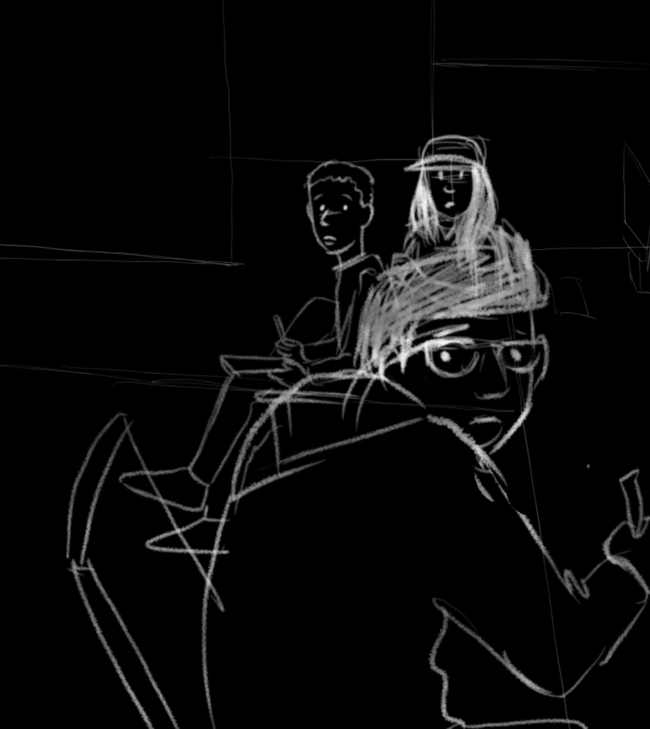
You focused on performing arts and fine arts?
Well, I focused on fine art, because that was my foundation at LaGuardia. Fine art, painting and drawing. But I did take one class in cartooning. Another was a class in children’s book illustration. So, I had a lot of opportunities to use my style. There were lots of other opportunities like you also could do drawings for the school newspaper and stuff like that.
But when I got accepted into Rhode Island School Design, that was the first time that I was actually doing animation and doing animation on paper. And seeing my animation play on the screen blew my mind—and that just kind of cemented it. I already knew I wanted to be an animator. But then when I started doing it, it was like— mind blown!
Did you study with Amy Kravitz?
Amy Kravitz and Steve Subotnick. They are amazing and still doing their thing —a husband-and-wife duo that teach thesis together. And it was really amazing. What really blew my mind was when they brought us to the Ottawa International Animation Festival.
And, I was like, “Oh my God! This is what it’s like to hang out with a bunch of other animators!”
It blew my mind. And I tell this story all the time—but going to a screening in Ottawa I was blown away. Normally when you go to the movies or a screening, you say, “Oh, that was nice. Okay, let’s go to dinner.” At the Ottawa Festival, this was the first time in my life that I went to a screening and then, an hour later, I’m standing next to the person who made the film!
And even if they are a celebrity, they’re just hanging out with us. I’ll see an amazing film, and then I’ll turn around, and the person whose film was my favorite thing I’ve ever seen in the world is standing next to me drinking a beer. And I’m like, “Oh my God, you’re….”, you know?
And everybody’s so sweet.
Who were some influences for you?
One of my favorite people that I met came to RISD to speak. Janet Perlman. She showed us her work such as Cinderella Penguin, which I still show to my own students!
And it blew my mind when she showed us something that she worked on, directed by the legendary Derek Lamb, called Karate Kids because it was one of the first times I ever saw an animation that was in a cute style, but it talked about real things. Like, people actually died in it and stuff. It was life changing seeing that.
So when I did my junior film, Janet was actually brought in as a guest adviser that would sit with you and give you feedback on your film. And to this day, she remembers my film. She and I became friends because I would then subsequently come to Ottawa year after year and would always see her.
Another person they brought in was Barry Purves. He had just completed his epic stop-motion film Rigoletto, and he came in with the actual puppets. One of the puppets was Rigoletto himself and he demonstrated that the puppet had screws in the chest that actually expanded the chest to make it look like he was breathing. He made it look so realistic. And, by the way, that was the gateway for me becoming obsessed with opera more than 20 years down the line.
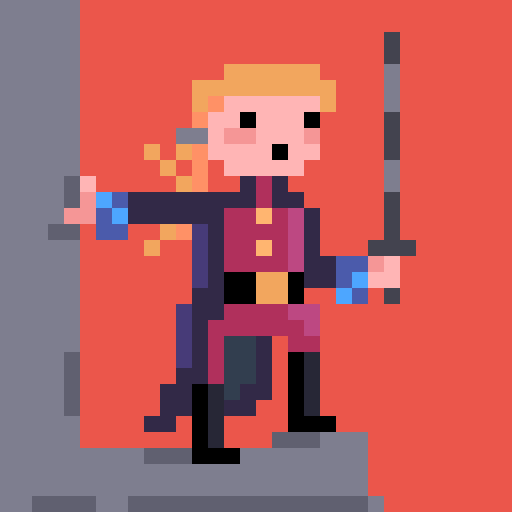
I could do a whole separate interview about influences, but John Dilworth is probably my biggest influence because he’s also my first gig. And to this day, I draw my own style but there are definitely things stylistically I do that are influenced by having worked on his stuff for so long.
What year did you start working for him?
1996. And do you remember CD ROMs? I talk to my students about them I ask them “do you remember CD ROMs? They are like iPad apps but on a CD that you pop in! I get a lot of blank looks haha! But that first job in 1996, John was working on this National Geographic CD ROM.
I learned so much on that job— I helped with clean up and inbetweening and learned on the job. That was the very first time I touched something professional. And John was so generous with his time he taught me so much. I actually came on as an intern and I was so thrilled to be doing something professionally. I would have just worked for him for free forever. But after two weeks, he said, “Noodle!” (Back then he would call me Noodle), “I’ve come to a decision. You’re good. You’re freelance now. I’m paying you.”
I was like, “Wow! Awesome! Thanks!”
He says, “Now, get out of here. I’ll see you in the morning. Come back at 9:00 a.m. Sharp.”
It was pretty cool! I got to work on a bunch of cool stuff including one of his independent films and some wonderful shorts for Sesame Street. But then, this little show called Courage The Cowardly Dog got picked up, and he said, “do you wanna work on it?”

You guys animated all that stuff in New York?
Actually, it was animated overseas, but everything else was done here: writing, design, right up to storyboard. The storyboards were basically layouts because the characters had to be ‘on model clean’— cleaned up so that all an animator would have to do is blow it up and work directly off of it. And there wouldn’t have to be any guesswork especially with language barriers. We had to be really meticulous. So, the storyboards had to be so thorough.
Lately, I went viral because a photo from ten years ago of me drawing Courage on the blackboard in a classroom circulated widely on the internet. I have no idea why that photo got so popular but it keeps popping up and becoming viral all over again haha! I get requests to do interviews a lot about my time working on Courage, and that’s kind of frustrating to me because I want people to interview me about my own work, not just Courage.
So let’s do that.
Because the photo of me drawing Courage the Cowardly Dog on a blackboard went viral I suddenly got an insurgence of people following me on Instagram.
And suddenly there’s all this interest in my graphic novel.
What’s it called?
It’s called Snozzlewinks.

(Looking at it online) I think it’s lovely. I mean, it’s just simple. And, your drawings are charming.
Thank you. I learned how to draw cartoons by copying the Smurfs.
And then I would create my own Smurf stories. And then after a while it wasn’t enough.
I wanted to create my own worlds. So, I came up with Snozzlewinks at 8 years old.
Snozzlewinks are creatures that have kind of dog ears, and have kind of an elephant nose and a lion’s tail. But the Snizzlewonks have a pointy tail—so it’s like a devil tail. But they’re green and they’re all the same shade of green. I might have been influenced by the Smurfs and how they’re all the same color— blue, and they are all alike. But they all have different personalities and are all different.
I think subconsciously that became a thing like, ‘hey, we’re all the same, we’re all green even though we’re from different worlds—we’re cut from the same cloth, even though I’m a Snozzlewink and you’re a Snizzlewonk we are the same’ you know? And I like that. And with my recent work I want to lean into that concept more.
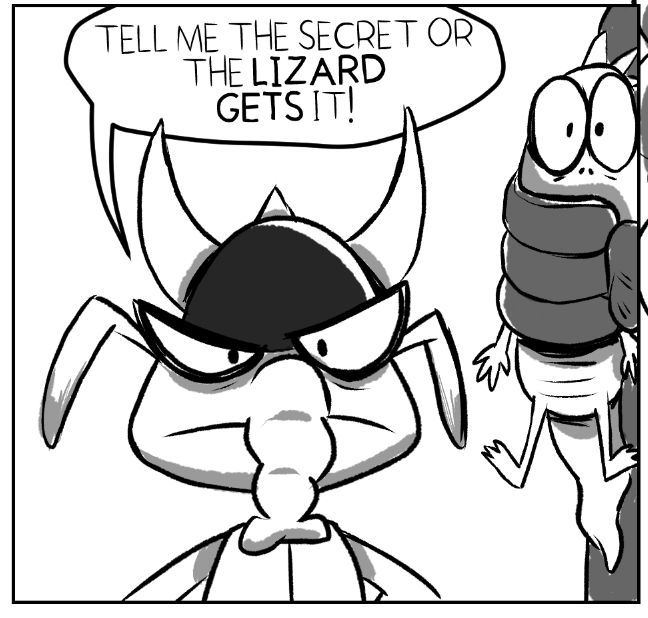
That’s really great.
Thanks! It’s really funny, because I did this first graphic novel as part of my thesis when I went to grad school at the School of Visual Arts. I completed it in 2020. And I remember Nathan Fox, who’s the head of the Visual Narrative Department at SVA said, “So Pilar. Why green? Could you have some of them in different colors?”
And, and I was like, “Well, that’s the one thing. They have to be green. They’ve always been green. They were green when I was eight years old. That’s what they are.” I think he wanted me to kill my darlings and I don’t blame him, haha! But it’s almost like—and I don’t know if you’ve experienced this—but when you create a character, they become so real to you that they just become real. The Snozzlewinks told me they wanted to be green so green they stayed.
Unfortunately, because of time constraints I decided to do my graphic novel like manga…grey wash. But I am happy with how it came out. I’m planning a second one and this time it will be in color.
What’s the influence of manga on you in your work?
Where do I even begin?! When I was in high school, I was always reading any manga I could get my hands on. I’m influenced by the action lines, or I’ll do grey washes, or the facial expressions. I always have stories with sad girls in them and in anime, like in my story there’s the bad guy that’s in love with the female protagonist. That’s very 80’s anime. In my stories I did when I was 8 there’s a Snozzlewink named Maria. And the bad guy’s name is the evil Tagoff, and he’s always trying to conquer the Snozzlwinks with his army. But he’s secretly in love with Maria. I have one that I did —a comic I did —when I was eight and he actually has a wedding! He’s like, you know, ‘You’re gonna be my bride!’.
Ok. So, you worked with Yvette Kaplan and JJ Sedelmaier and all those folks?
I was a layout artist on Daria. And here’s something interesting: I was risking my career a little bit. I worked on Courage the Cowardly Dog for a season. But I saw an opportunity open for me over at MTV Animation. I had applied there before and already been rejected three times. I’ve always wanted to work for MTV—that was the place to work in the 90’s. Even though I was so grateful to be at Stretch, I just applied for the hell of it without expecting much.
I did a layout test, and I got accepted! Courage went on for two more seasons, and then I think that they worked on a film for an extra year. John just kept everyone on, and I could have had that much more work. And John was annoyed at me because he was like, ‘You’re my protege, and you’re leaving me!’ But he knows I love him and always will.

That’s great story. What year were you at MTV?
I was at MTV in 1999 to 2000. Then— fun fact— we finished up Daria season four.
And you can put this on a record I don’t hide it anymore— I got let go. I was a layout artist on Season 4 of Daria and it was Christmas Eve. I got called into the producer’s office.
I was like, ‘Oh, maybe they’re inviting people individually into their office to wish me happy holidays and maybe give me a bonus or something,’ because it was the day before Christmas. And so, I walked in and the producer said it was the ‘Today is the last day of the season, and we’re wrapping up for the holiday hiatus before we came back and start Season 5. And I’d like to ask you not to come back next season.’
One of the things that I learned was to keep professional—don’t let emotion show ever. And I got really good at it during my early career, there just wasn’t time for tears or being sensitive, you had to hide it.
I asked, “Is there any particular reason why?” She said, ‘Well, we’ve gotten too many revisions back and I’ve gotten complaints.’
I said, ‘Okay.’ And I stood up, and I shook her hand and said, ‘I would like to say it’s been a pleasure working here. Thank you for having me.’ And I walked out of her office, turned the corner, and then I burst into tears. I was not going to give her the satisfaction to see me cry.
And then a second later, I’m walking down the hall, and I run into producer Barbara Jean Kearney.
I’m like, ‘Barb, Hi!! what are you doing here?” She says, ‘Oh, we just started a new division here. MTV Commercials. Are you available?’
And I said, ‘I am now!’ So as soon as we started back up, after New Year’s I was back in there, working on commercials same floor— too. On the first day I walked past that producer who said ‘What are you doing here?’
I was like, ‘Oh, I’m here working with Barbara Jean. She marched off, like, she was gonna go to Barbara’s office and be like, ‘why the HELL is she here? ‘And then she walked away, and then kind of came back, looking a little more humble. I said ‘Hi.’ And every time I started work, I’d say ‘Good morning!’
That’s a great one. Your story sets a great example of how to deal with the inevitable rejection one gets in the business.
Yes. I didn’t have the energy to hold on to hatred and anger—and I wasn’t going to give her the satisfaction. It was like, if I’m walking around angry then she sees that she has an effect on me— so I kill‘em with kindness. The best revenge is to just show that you’re doing great and just move on and do great. That’s what you do.
Good on you. I think that’s great.

It was great, and actually that gave me a good couple more years’ worth of work. But then 9/11 happened, and they called a mandatory meeting a few months afterwards. They called it a mandatory meeting of all the departments. All the divisions within MTV Animation. I’m like, ‘Oh, this isn’t good!’
And they said, ‘We’d like to let you know that we’re shutting down MTV animation effective immediately. You have time to gather your stuff.’ After 9/11, everybody was afraid to spend money. I feel like, everybody was like, ‘Hey, if MTV doesn’t have to spend money on a whole different division, why should we?
That’s when it ended— because of 9/11?
They didn’t say in so many words —’this is because of 9/11.’ But the timing, it felt this way—— so then a couple of months later I’m sitting at home, minding my own business, and the phone rings.
‘Hey, Pilar! Nick Litwinko here! You ready to do some work?’ It was Nick, former head of MTV commercials.
I was like, ‘Didn’t MTV commercials close? How are you giving me work? Not that I’m complaining.’
He’s just like, ‘I opened my own studio!’
So, I got a good couple more years of work out of Nick’s studio Rogue Creative, working with wonderful animators from the Beavis era such as Geof Johnson and Dougie Hines. Fun times!
I love Geof and Dougie! So, you learned on cells and film animation and then then your first job was CD-ROMs?
Pretty much, but I’m classically trained. And the first animation I ever did was on paper, Courage the Cowardly Dog. Everything I did was on paper. But it was then scanned and colored digitally
…and nowadays you’re digital?
So, it’s interesting because, in 2004 — a quick back story.
Little by little, work started drying up. I was doing some really cool animation for this company called Possible Worlds, and they did a bunch of CD-ROM stuff. And it was the first time I animated on something that appeared on the Internet. They had a Hallmark account, and so we would do a lot of these animated greeting cards.
They also had this cool system they came up with where you’d animate on paper every possible movement of their limbs every combination you can think of so you would have this complete model turn with every single combination of everything possible then scanned and put into this machine. And it could be manipulated in real time. The replacement for that is the program Adobe Character Animator, right? Because that’s all automated now.
And then fast forward. In 2004, work started drying up, and I was like, ‘I need to learn Flash.’
Because every time I got interviewed for a gig they said, ‘You need to learn Flash.’
And so my amazing Mom gave me $700. I went to the New School (now Parsons) and took a Flash course. And I got really good at it. It was actually kind of like a web building course, but it taught you all the tools. And then, I got my first directing gig at this place called Tree House Animation, and they said, ‘How would you like to direct a commercial? Are you good at Flash?’
And I’d only ever used Flash on my own a little bit. But I said, ‘Sure!’
And I learned really quickly on the job. I was directing, but I used my animation chops and we did this Listerine spot. I had awesome animators on it like Otis Brayboy, Chris Burns and Christie Bertelson.
Now I do all my animation in Flash (now Adobe Animate) and I take my traditional animation chops and use it in a digital environment. So even though I’m working in Flash, I’m working very organically, and I’m doing a lot of frame by frame because it’s the only way that I know how. I’m really good at using symbols. So, I have a lot of tricks where I’ll animate frame by frame, but then if I need to have a wobble, I’ll have it be inside of a symbol. But it’ll look good, because I know how traditional animation works. Because I’ve actually done it. And there’s something to that, you know?
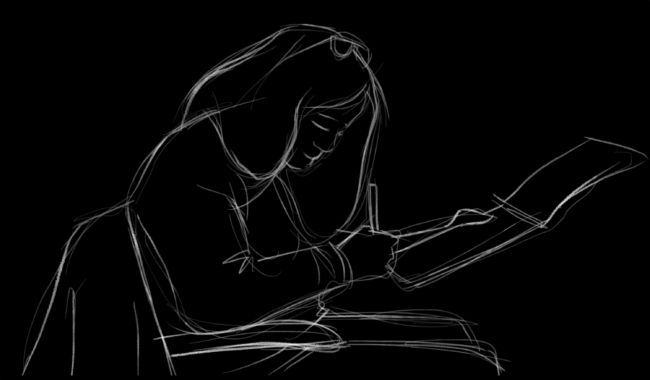
Absolutely! Tell me about your teaching. Do you teach Animate (Flash)?
I teach the Animation Principles by use of the Wacom tablet and drawing straight into Adobe Animate. My class is part — learn the animation principles— and part— learn Adobe Animate (Flash), a program that is still an industry standard. I’ve been doing it this way since 2016 and have had great success. My students have gone on to get hired buy agencies and gotten their work into festivals.
A few years ago, when I was teaching at Kingsborough Community College, I was supposed to teach Harmony but I am terrible at that program so I switched to Flash. It’s so easy to use and the students love working in it. And I love it with the Cintiq and all that.
And I’m actually I animating a film entirely in Flash at the moment. Stay tuned for a trailer in a couple months.
On another note last summer, I challenged myself and said ‘Can I Animate a film in one month? I’m tired of overthinking it.’ So that’s when I did Last Class, which I call my COVID film— a two-minute short. I worked in Jacob Kafka’s animation app Rough Animator. It’s so great to work in. User friendly and looks great. When I finished “Last Class” I started sending it to festivals and I got back a stack of rejection letters. But then one day I was having a moment, I was coming off of a rough time in my life in general. And I said, ‘I really need a win. I just need a win today. I would just love one win.’ And then, almost like the universe heard me that day, I got an email from Film Freeway. ‘Your film’s been selected to be in Monstrafest in Lisbon, Portugal!’
I was like, ‘Oh my God!’ And the next thing you know, I’m hearing from them, and they’re like, ‘Are you coming? We’ll pay for part of your trip!’
And I was just like, ‘You know what? I’m going!’
So, I did. I just came back from Portugal. It was such a fantastic festival.
I’m hearing from other festivals now. I have some festival news I can’t really talk about right now, but a handful of things are starting to percolate.
I’ve already been in a few other festivals, and it just feels really good.
And I’ve seen people watch this film. Almost everyone that’s seen it, or a good percentage of people that have seen it have a visceral response to it. A bunch of people were like, ‘Oh my God, I cried.’
I would say that it’s a poignant idea for a film — that’s a poignant moment in our lives.
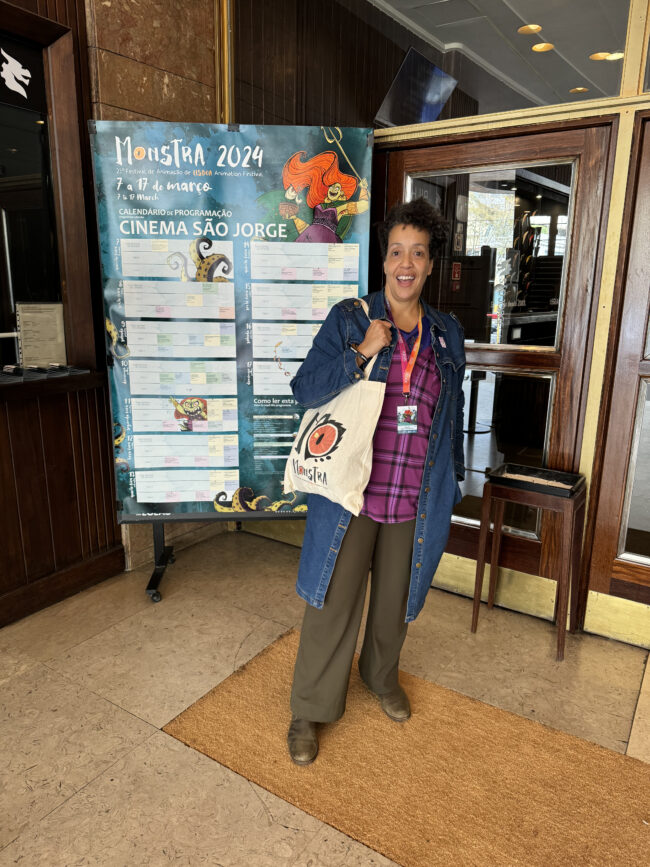
What are you working on now?
I’m working on another film now, which is actually funny. This idea came to me in a dream, I wrote it down and then I just kind of forgot about it for ten years, but it’s a metaphor for what happens to the body when one stops moving. And then for some reason, this past year and a half, I picked it back up and I said, ‘this story needs to be told. This story is important.’ And I don’t know why, because it’s this fictional world, with this fictional race of creatures that have to keep moving. Because every time they stop, something bad happens to them. That’s all I’ll say. So, they have to keep moving.
You seem like someone who keeps moving! So, where do you see yourself going? Festivals, making films, graphic novels, teaching?
I mean, honestly, I kind of feel like I’m entering into this next phase of my career, where it’s not about me working on other people’s stuff now but it’s about me working on my own stuff. I very rarely accept outside work anymore. There’s only two people in the universe that I accept work from anymore: Richard O’Connor and Chris Cerf because they both are awesome.
My two main priorities are my teaching and my films.
I’m an Assistant Professor at the City College of New York. I teach two animation classes. And this past year I just became Program Director of their design division, and that’s taken a lot of my time. But the beauty of working in academia, they hold you accountable for working on your own stuff. They’ll say, ‘So, Pilar where’s your research? Where’s your film?’ And what that means is, for an animator or filmmaker, that your work has gotten into animation festivals and has been reviewed by your peers and judged by a panel. And so far, I have a growing list of film festivals I’ve gotten into. So where I see myself going is— I’m just going to keep teaching and making films. I love my job. I love bringing the love of animation to my students.
And they are lucky to have you as their teacher! Best of luck on your upcoming projects. It was great talking with you.
You too! Thank you!

